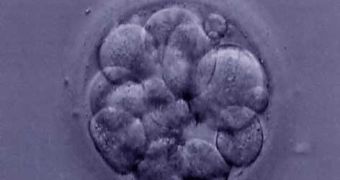A team of scientists working with the University of Edinburgh now claim that they have succeeded in piecing together a 3D printer which might one day allow them to manufacture living tissues.
Later on, these 3D-printed human tissues could be used to either test various drug, or grow organs needed for transplant surgeries.
Apparently, this innovative printer uses embryonic stem cells as ink, and works by forcing these cells to form uniform-size droplets, which scientists intend to coerce into forming various types of tissues.
This is because human embryonic stem cells (hESCs, for short) can grow to become whatever type of cells the researchers looking after them want them to.
As explained by Scientific American, those wishing to compel hESCs to develop into a certain type of cell need only place them in an environment where the cells are exposed to the biological cues they need in order to follow the growth path previously established for them.
According to the same source, the 3D printer used by the researchers who embarked on this project was quite successful in printing uniform-size droplets of cells.
Moreover, the cells were pretty much alive and kicking, and even maintained their ability to converse into different cell types.
In order to achieve this, the printer relies on two so-called bio-ink dispensers: one made up of stem cells allowed to simply float about in a nutrient-rich environment, and one made up of just said medium.
Once the printer begins dispensing these two inks in layers, droplets are formed. Interestingly enough, about 95% of the cells printed in this manner were still very much alive 24 hours after the experiment had come to an end, and 3 days later the same could be said for 86% of them.
"This technology could be really good for high-throughput drug testing. One can build mini-tissues from the bottom up, using a repeatable, reliable method."
"Building whole organs is the long-term goal, and it may be quite far from where we are today," Biomedical engineer Utkan Demirci, of Harvard University Medical School and Brigham and Women's Hospital commented with respect to this scientific breakthrough.
A detailed account of this study was published in the scientific journal Biofabrication of February 5.

 14 DAY TRIAL //
14 DAY TRIAL //